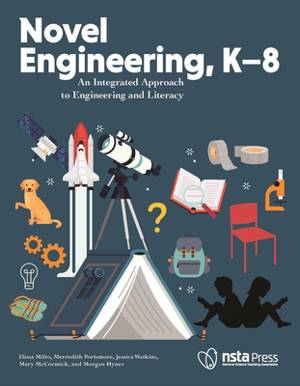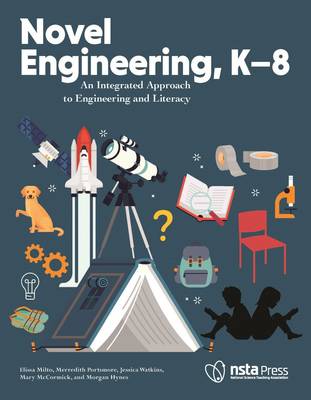
- Afhalen na 1 uur in een winkel met voorraad
- Gratis thuislevering in België vanaf € 30
- Ruim aanbod met 7 miljoen producten
- Afhalen na 1 uur in een winkel met voorraad
- Gratis thuislevering in België vanaf € 30
- Ruim aanbod met 7 miljoen producten
Zoeken
Novel Engineering, K-8
An Integrated Approach to Engineering and Literacy
Elissa Milto, Merredith Portsmore, Jessica Watkins
Paperback | Engels
€ 70,95
+ 141 punten
Omschrijving
With the Novel Engineering approach, "students become excited about what they are reading, writing, designing, and building! This excitement in turn helps them make strides in engineering and literacy, as well as in their abilities to work together, think creatively and analytically, and communicate their ideas." --from Chapter 1 of Novel Engineering This book will both introduce your students to an exciting integrated curriculum and support you as you use it in your own elementary or middle school classroom. Novel Engineering shows how your students can work through engineering design challenges inspired by a broad range of literature--novels and short stories, biographies and histories, or even picture books. By way of introduction, the book offers clear conceptual background and practical advice on how the approach works: Your students pull information from literature to identify a problem. Then, using details from the story or text, they go through an engineering design process to develop functional solutions for their "clients"--the book's characters. To support your efforts and bring the concept to life, the book gives you five in-depth case studies featuring the use of novels, a biography, and a nonfiction historical text. In addition to demonstrating what a Novel Engineering project looks like in an actual classroom, the case studies give you practice in thinking about what your students' work might look like and how you would respond. One case describes a class in which students help the shipwrecked Swiss Family Robinson build a shelter to keep them cool under the hot sun. Another tells of students who design a hearing aid for the main character in El Deafo--and then style it as a fashion accessory. You'll see that the books used in the case studies are just suggestions. You don't have to adopt texts outside your existing English language arts or social studies curriculum. You also don't have to buy a specific building-materials kit. You just have to embrace the idea that literacy and engineering can support each other in your classroom--and then watch the excitement build.
Specificaties
Betrokkenen
- Auteur(s):
- Uitgeverij:
Inhoud
- Aantal bladzijden:
- 318
- Taal:
- Engels
Eigenschappen
- Productcode (EAN):
- 9781681406428
- Verschijningsdatum:
- 28/05/2020
- Uitvoering:
- Paperback
- Formaat:
- Trade paperback (VS)
- Afmetingen:
- 211 mm x 272 mm
- Gewicht:
- 762 g

Alleen bij Standaard Boekhandel
+ 141 punten op je klantenkaart van Standaard Boekhandel
Beoordelingen
We publiceren alleen reviews die voldoen aan de voorwaarden voor reviews. Bekijk onze voorwaarden voor reviews.











